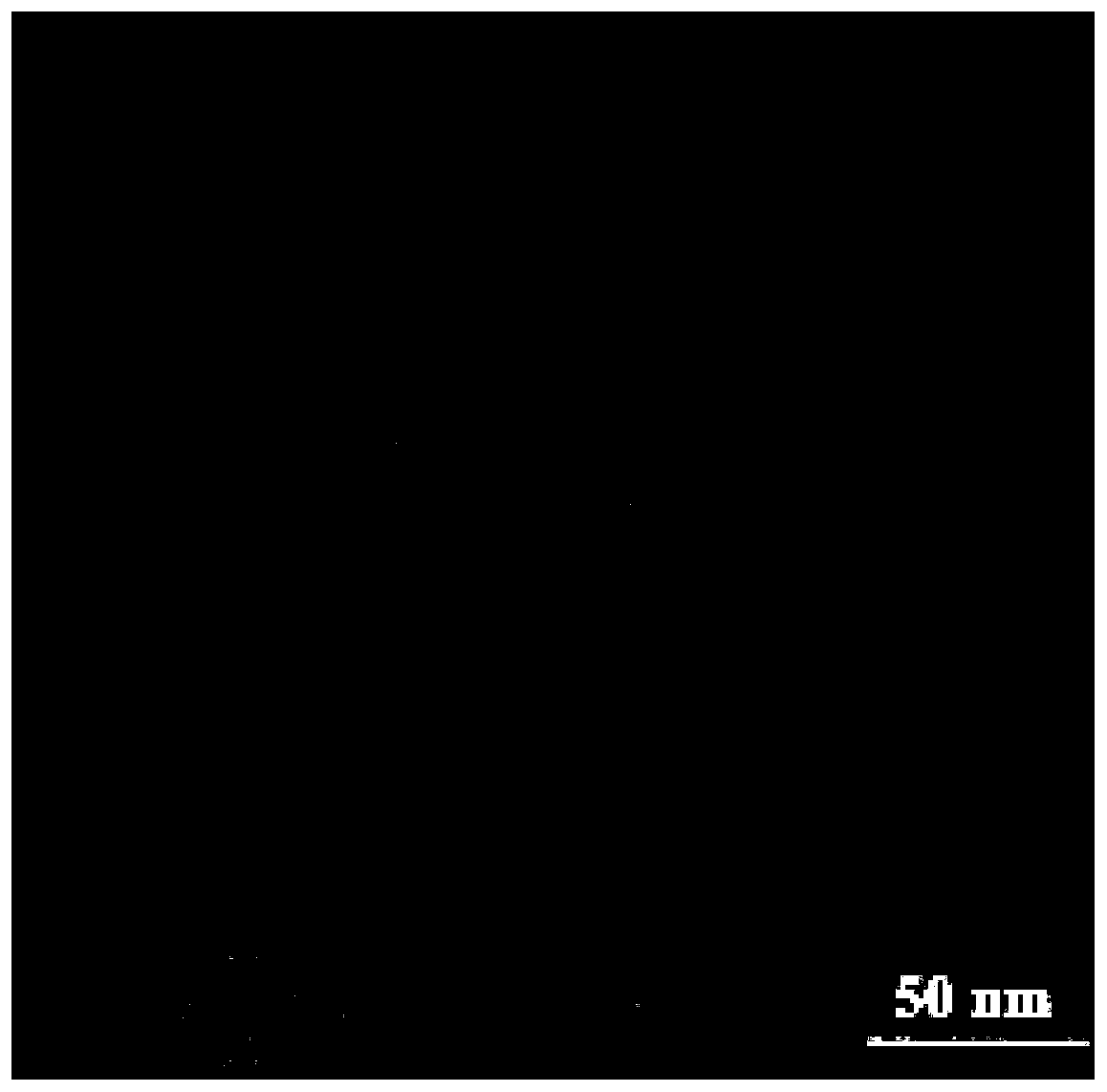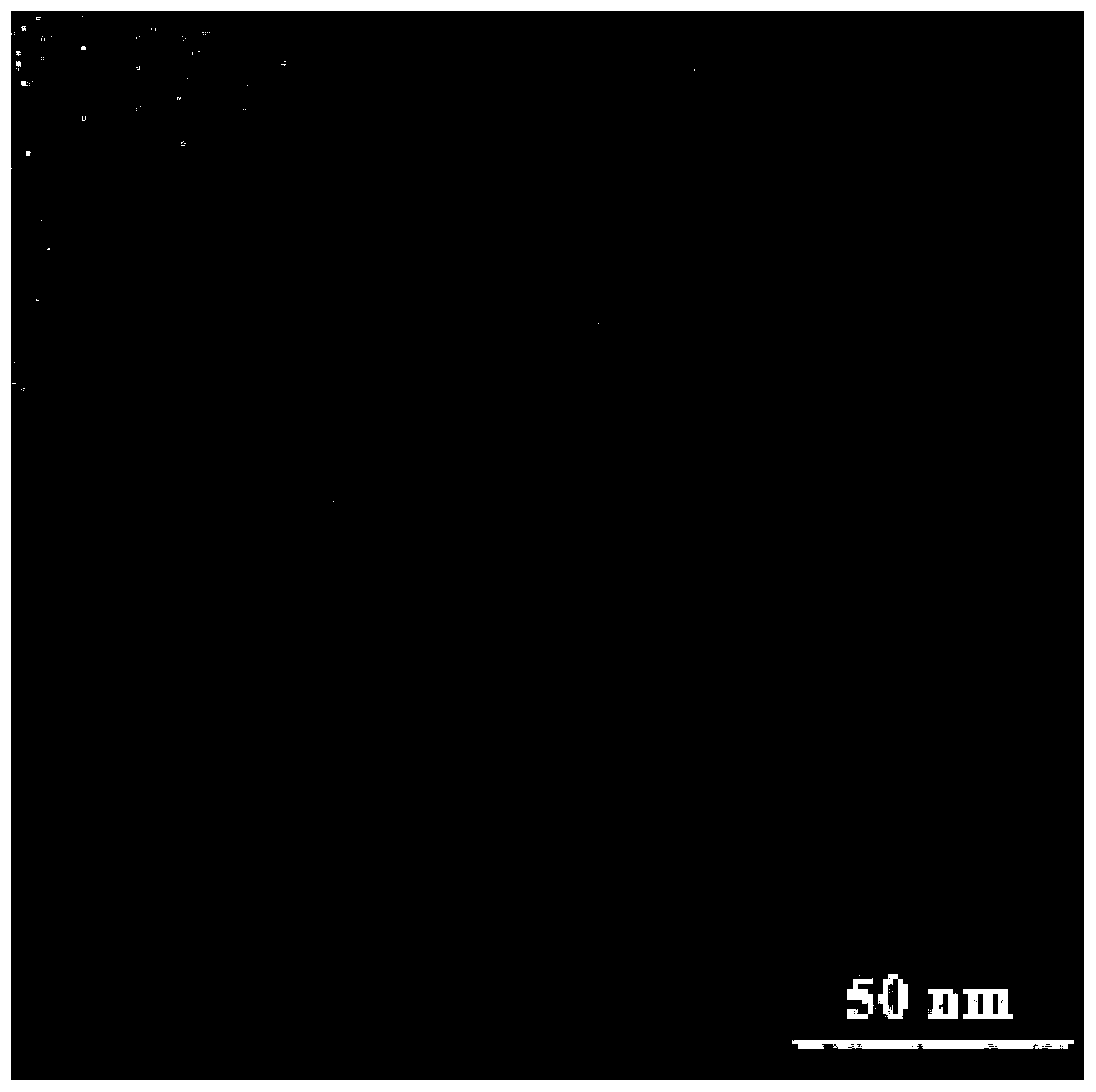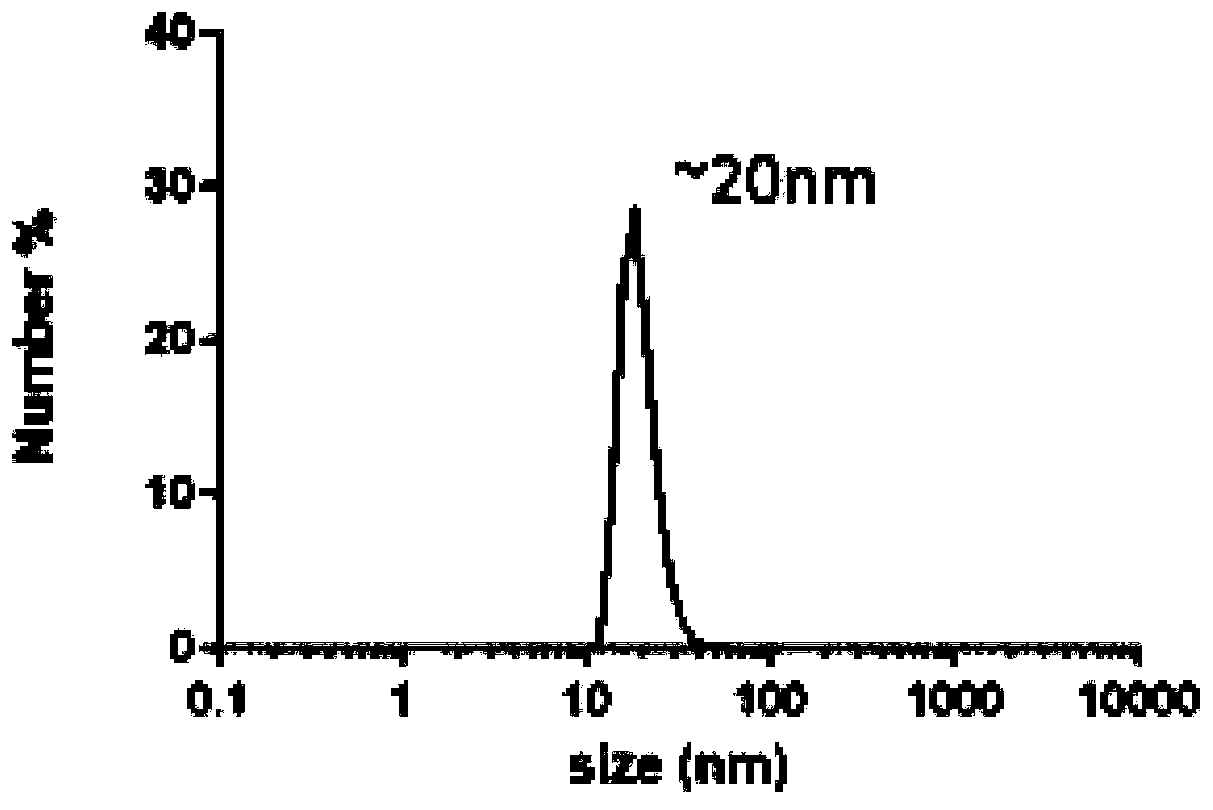Application of ultra-small cerium oxide nanocrystal modified by phospholipid and polyethylene glycol
A polyethylene glycol, ultra-small technology, applied in the direction of nanotechnology, nanotechnology, nanomedicine, etc., can solve problems such as interference with mitochondrial electron transport chain, damage to mitochondrial respiration, oxidative stress response, etc., to achieve good removal of cells, The effect of uniform and controllable particle size and high biological safety
- Summary
- Abstract
- Description
- Claims
- Application Information
AI Technical Summary
Problems solved by technology
Method used
Image
Examples
Embodiment 1
[0033] (1) Synthesis of ultra-small cerium oxide nanocrystals:
[0034] Add 0.4g of cerium acetate hydrate and 3.2g of oleylamine to 15ml of xylene and stir, increase the temperature to 90°C at a rate of 2°C per minute, and stir for 4 hours to form a complex; inject 1ml of deionized water into the inert In the gas protection reaction system, aging for three hours, precipitation with anhydrous ether, and centrifugation to obtain ultra-small cerium oxide nanocrystals.
[0035] The morphology of ultra-small cerium oxide nanocrystals is characterized by transmission electron microscope, such as figure 1 As shown, the particle size is about 0.1-10 nm.
[0036] (2) Synthesis of ultra-small cerium oxide nanocrystals modified by phospholipid polyethylene glycol:
[0037] Add 0.01 g of phosphate polyethylene glycol (molecular weight 2000) and 2 mg of ultra-small cerium oxide nanocrystals to 5 ml of chloroform, and sonicate for 3 minutes in a water bath ultrasonic pot. After the above mixed li...
Embodiment 2
[0040] (1) Synthesis of ultra-small cerium oxide nanocrystals:
[0041] Add 0.4g of cerium acetate hydrate and 3.2g of oleylamine into 15ml of xylene and stir, increase the temperature to 95°C at a rate of 2°C per minute, and stir for 6 hours to form a complex; inject 1ml of deionized water into the inert In the gas protection reaction system, aging for three hours, precipitation with anhydrous ether, and centrifugation to obtain ultra-small cerium oxide nanocrystals.
[0042] (2) Synthesis of ultra-small cerium oxide nanocrystals modified by phospholipid polyethylene glycol:
[0043] Add 0.01 g of phosphate polyethylene glycol (molecular weight 2000) and 2 mg of ultra-small cerium oxide nanocrystals to 5 ml of chloroform, and sonicate for 5 minutes in a water bath ultrasonic pot. After the above-mentioned mixed solution is rotary steamed at 50 degrees Celsius for 1.5 hours, 1 ml of deionized water is added for hydration to obtain ultra-small cerium oxide nanocrystals modified with ...
Embodiment 3
[0045] (1) Synthesis of ultra-small cerium oxide nanocrystals:
[0046] Add 0.4g of cerium acetate hydrate and 3.2g of oleylamine to 15ml of xylene and stir, increase the temperature to 85°C at a rate of 2°C per minute, and stir for 3 hours to form a complex; inject 1ml of deionized water into the inert In the gas protection reaction system, aging for three hours, precipitation with anhydrous ether, and centrifugation to obtain ultra-small cerium oxide nanocrystals.
[0047] (2) Synthesis of ultra-small cerium oxide nanocrystals modified by phospholipid polyethylene glycol:
[0048] 0.01 g of phosphate polyethylene glycol (molecular weight 2000) and 2 mg of ultra-small cerium oxide nanocrystals were added to 5 ml of chloroform, and ultrasonicated in a water bath ultrasonic pot for 30 minutes. After the above-mentioned mixed solution is rotary steamed at 50 degrees Celsius for 2.5 hours, 1 ml of deionized water is added for hydration to obtain ultra-small cerium oxide nanocrystals mo...
PUM
 Login to View More
Login to View More Abstract
Description
Claims
Application Information
 Login to View More
Login to View More - R&D
- Intellectual Property
- Life Sciences
- Materials
- Tech Scout
- Unparalleled Data Quality
- Higher Quality Content
- 60% Fewer Hallucinations
Browse by: Latest US Patents, China's latest patents, Technical Efficacy Thesaurus, Application Domain, Technology Topic, Popular Technical Reports.
© 2025 PatSnap. All rights reserved.Legal|Privacy policy|Modern Slavery Act Transparency Statement|Sitemap|About US| Contact US: help@patsnap.com



